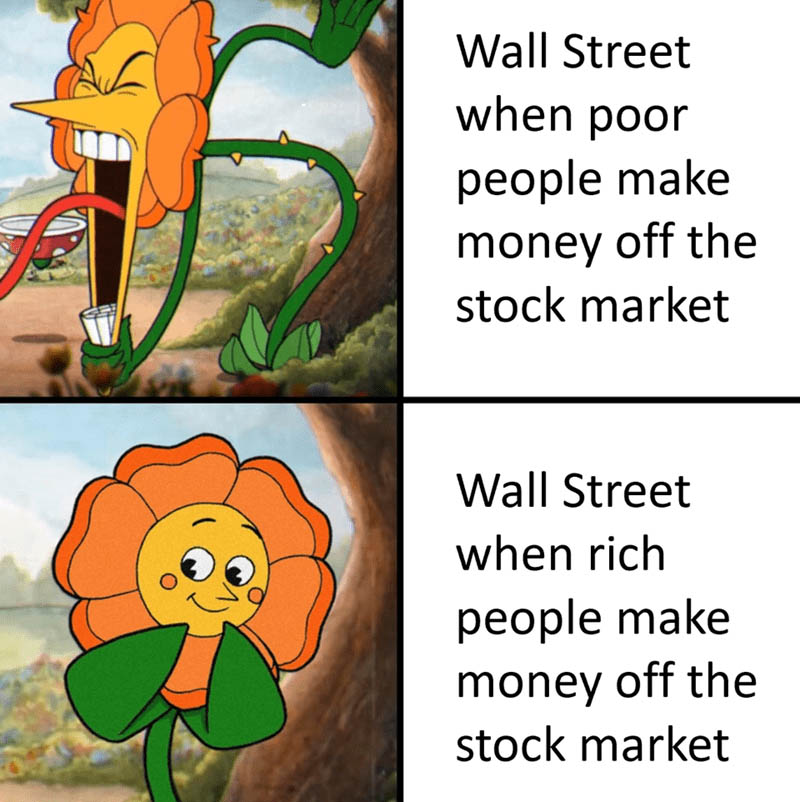

The pandemic effects on our economy and the market came swiftly. We had a long bull market, or a rising market without a bear market threat until March 2020. Many young investors were caught, owning GameStop shares at these irrational levels, and potentially losing money. Short squeezes resulted to cover high level of short-selling by hedge funds, among others.Īs a result, GameStop (and other stocks) soared in this frenzy, before coming back down to more appropriate prices. Influenced by r/WallStreetBets, there was excessive buying of this stock for no apparent reason other than seeming to want to impact short-sellers. GameStop, a company with uninspiring fundamentals, is a recent example of short squeezes. Then they got squeezed when the Tesla shares rose due to higher revenues than expected. Some investors didn’t believe Elon Musk or analysts’ bullish stance and shorted the stock. Short covering happens to controversial or cult-like stocks like Tesla rise very quickly. Short sellers get caught racing to cover their short position in the stock. Overly negative sentiment about the company spurs short interest in the company’s shares. Stock prices rise when unexpected good news or better than expected earnings. That happens due to a lack of supply accompanied by an excess demand for that stock. Short SqueezeĪ short squeeze may occur when there is a rapid rise in stock. An extremely high short interest for a certain stock may indicate negative market sentiment or high pessimism for that stock. Investors track them as a percentage or a number. Short Interest is a gauge reflecting the number of shares sold short but not yet covered. It refers to the borrowing of shares by an investor and immediately sells them, hoping he or she can purchase them later at a lower price for a profit. A short position is the opposite of a long position. Short-selling or shorting is a more complex term. Investors who have “long” Apple shares expect that the stock will rise in value in the future. Long/Short refers to what kind of security positions you have in shares. I was marketing my research ideas to the buy-side analysts (did their own research) and portfolio managers, that is, institutional investors who were buying equities in my sector. The telecom industry was undergoing dramatic deregulation changes, facing new competition, entering the cable, internet, and video markets. I evaluated relevant stocks within that sector, published research reports, and made Buy/Sell/Hold recommendations. We were on the sell-side working for a brokerage/investment banking firm.Īs a sell-side analyst, I covered the telecommunications services industry.

He patiently drew a lot of pencil diagrams. Immediately, I marched into my boss with my beet-red light bulb face to ask him to explain. In my early 20s, I used to turn bright red and never be able to hide it. I felt like I was in a war zone for a moment. When Amy said she came from the buyside, I had no idea what she was talking about nor what side I was on. I had come internally to join equity research from the “back office,” that is, the non-revenue producing part of the term. Amy asked me where I had previously worked and shared that she had come from the buy-side. It was a conversation with one of my peers, Amy, when she introduced herself. I had one particular experience that gave me a lot of personal grief and embarrassment. As a newbie sell-side junior analyst, I was unfamiliar with a lot of jargon and felt stumped in others’ conversations. When I began my first Wall Street job, I had a lot to learn. Wall Street Jargon That Can Be Confounding: Sellside/ Buyside Use small increments of money at first just to get started. For those who want to work on Wall Street or simply want to know the basics of investing, this post is for you. Each area–research, sales, trading, investment banking, and money management- has its jargon that can be interchangeable. Those who have worked on idiosyncratic Wall Street recognize a different language and culture that permeates the business. With the school’s help, I was able to get him some support, but that story is for another day. This student had awakened me not only to a misinterpretation I was conveying but his plight living on the streets. No, I was not “a lady of the night” but had been an equity analyst on Wall Street. Suddenly I was aware I was taking it for granted that they understood “the street” as a common phrase for Wall Street. Walking toward me, he said, “Professor, that took a lot of guts to share your background with us. Ron was a disheveled-looking student I had noticed sitting in the back. I realized, with a delay, the students were replying to another universe until Ron approached me. The first time it happened, I was surprised. Taking Profits Off The Table/ Frothy Market.Wall Street Jargon That Can Be Confounding:.


 0 kommentar(er)
0 kommentar(er)
